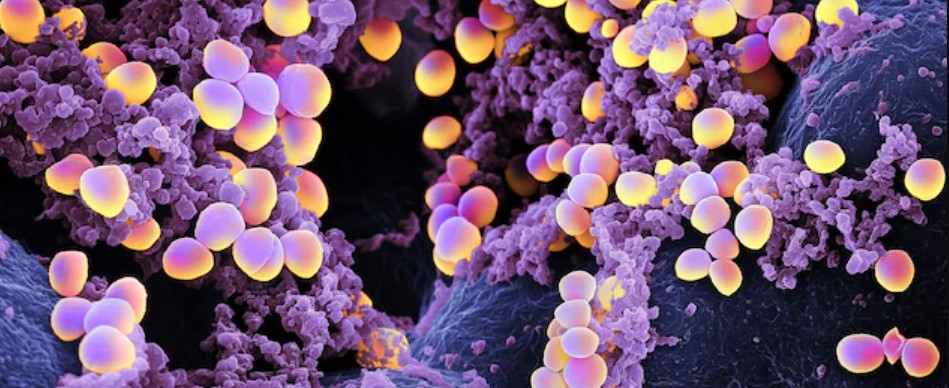Microbes are often perceived as dangerous nuisances responsible for fatal diseases like tuberculosis. Yet, despite the negative connotations attached to their colloquial name, “germ,” trillions of harmless microbes live on our skin and within the human body, and help us survive and thrive.
Lactobacillus: The plastic maker
Lactobacillus is a family of bacteria characterized by their ability to produce lactic acid as a by-product of glucose metabolism. These microbes inhabit human gastrointestinal tracts, mouths, and female reproductive organs. One of the most common Lactobacillus strains is L. acidophilus, which is found in the intestine and can minimize the absorption of cholesterol in the gut, promote weight loss, and reduce cold, flu, and allergy symptoms.
These bacteria not only play vital roles in the human body, but also in food production and medical treatments: Various species of Lactobacillus are used in the production of sour milks, cheeses, and yogurts, as well as in the manufacturing of fermented vegetables, beverages, sourdough breads, and sausages. They are also used as probiotics to restore bacterial imbalances in the human body after antibiotic treatments.
Dr. Bastien Castagner, associate professor in the Department of Pharmacology and Therapeutics at McGill, explains that probiotic treatments should be tailored to one’s personal microbiome to have a positive effect.
“One challenge facing therapeutic interventions aiming at modulating the gut microbiota will be to see how the interpersonal difference will affect their clinical success,” Castagner wrote in an email to The McGill Tribune. “For instance, a probiotic strain might colonize some host[s], but not others, depending on the endogenous microbiota of that person.”
Escherichia coli: The cancer annihilator
Escherichia coli, better known as E. coli, are a group of bacteria found in soil, contaminated foods, and human and animal digestive tracts. While some strains can cause disease, most forms of E. coli are harmless and play an important role in the human intestinal tract by aiding digestion and fighting other harmful microbes.
These microorganisms have also contributed to major scientific breakthroughs: Studies have found that they can help in the fight against cancer. By inserting extra DNA into E. coli cells, the bacteria can manufacture cancer-fighting molecules called nanobodies—the smallest fragment of antibody in the human body.
Outside its functions within the human body, E. coli can also help combat climate change by consuming carbon dioxide. Scientists have re-engineered the bacteria to convert carbon dioxide into biomass, rendering the E. coli photosynthetic.
Bifidobacterium: The cholesterol fighter
Bifidobacterium are a group of bacteria that play an important role in the gastrointestinal system and overall digestive health. These microorganisms are found in the intestines and break down fibre and complex carbohydrates.
“It is […] important to favour a diverse gut microbiota by eating a diet rich in vegetables, fruits, legumes, and grains,” Castagner wrote. “This is because the fibres [these foods] contain are not digested by us and reach our large intestine, where our gut microbiota mostly reside.”
There are more than 30 strains of this bacterium, but a few deserve special mention. Bifidobacterium bifidum helps protect humans from unhealthy bacteria, and when combined with L. acidophilus, helps to prevent eczema in newborns. Bifidobacterium infantis can also relieve pain and bloating from irritable bowel syndrome.
Staphylococcus: A skin protector, or agitator?
Staphylococcus is a group of mostly harmless bacteria that live on human skin. However, if Staphylococcus aureus bacteria cluster at an open skin wound, a staph infection can develop and become life-threatening if it reaches the heart, lungs, or bloodstream.
However, other strains of this germ have beneficial properties. Staphylococcus bacteria are involved in the production of lipoteichoic acid, which stops skin cells from releasing inflammatory chemicals. One strain of Staphylococcus epidermidis even produces chemicals associated with reduced tumour growth in response to ultraviolet light, suggesting a role in preventing skin cancer.
“The human gut microbiota is really an ecosystem,” Castagner wrote. “[A] great analogy is to think of it as a mature forest, where different trees, bushes, mosses, and fungi are competing for resources but also working together to maintain a stable ecosystem.”








